
Review on Tascam DR-70D DSLR Camera Portable Audio Recorder - Enhanced 4-Track Capability by Charlie Clayton

First Impressions So Far - Reliable little recorder for DSLR or pocket use
Let's get straight to the heart of the matter: This thing costs $300. I've noticed some negative reactions to the various components of this mixer/recorder on the web, and almost all of these negative reviews are either unfounded or completely ignore the value of this thing for its feature set. Show me 4 more tracks, phantom power recorder with 4 potentiometers on the market at this price? Sure, you can buy a more expensive mixer/recorder, but the 70d was aimed at a specific audience: DSLR/single cameras. So let's go deeper. Let's start with a little breakdown: - $300 is damn cheap for a 4 track recorder - Good size, not too big and wide enough to fit in the appropriate controls and screen - 4 x XLR/TRS- Inputs, line/cam out, camera in - phantom power for all XLRs - generous gain settings for in and out - limiter and low pass filter - SD card on the back (can't see where else it might fit anyway) - battery /SD flap can be annoying, I could just take it away. - Shame all 1/8"ports were 1/4" but again, size limitation so can't fault it - Battery life is ok but zoom is amazing. - Compressor wouldn't be bad - MP3 option would be nice - it would be great if it could make pancakes with bacon. All in all, for $300, there's nothing to complain about Layout and Design It's like the 60d but shorter and wider, which is a nice change. That's about as small as I think a 4 XLR unit could get. It fits nicely under a full-size DSLR, but looks pretty big under something smaller like a mirrorless camera. It doesn't really bother me because on a tripod it just becomes a broader base, it doesn't bother me at all. 3 XLRs are on one side, the 4th is on the opposite side. . It may sound strange, but depending on your setup and wiring, having 1 XLR on the opposite side can be very handy. The rest of the connections are also on the other side, and nothing protrudes either at the front or at the back. Speaking of the rear, there are two built-in microphones here, as well as a 4 AA battery compartment and an SD card port. If you're working with a camera that's perfectly fine, if you're planning on working with a bag it can be annoying, but then again: where else could they put batteries? I think they could cram the SD card connector somewhere else, but again I won't be picky at this price point. Ton) The 70d has a form factor that allows it to work well in a pocket despite its relatively small size. While it seems aimed at the shoot/shoot/shoot-under-camera crowd, I see it as an affordable first mixer/recorder for those looking to get into audio production. It has the essentials, but dig around and make sure it has everything you need as high-end recorders naturally come with extra features and tools. On the front of the device is a small but decent screen, a button big enough to control it, a record button, a slate button, multiple lights, and those always-useful 4 control buttons. Many recorders do not have a control for each input, since these settings are usually made with a separate mixer. In this case the target market is those who probably don't want another box pulled/installed/plugged in, they gave it all 4 handles. From what I've been told, these are digital knobs and not analog, meaning there's a digital adjustment as you turn the knob, and I've found it can feel a bit disconnected with quick/big changes. This means that the gain/volume change occurs shortly after the knob is actually turned. I've only really noticed this in extreme testing with fast button ramping up. Sound quality is subjective but it's what you would expect from a cheaper Tascam which is pretty damn good! It reaches 24 bits, 96 kHz. There's no point in making comparisons with more expensive devices because A: it's certainly not a high-end device, and B: your end-viewer doesn't experience side-by-side that the sound could have been better. The noise level is decent, but not as good as the more expensive models. However, my subjective ear liked what I heard. One thing that bothered me was an odd noise level I had for one of my mics, but it seemed to go away after my general unplug/replug/plug and shutdown troubleshooting. This only happened with 1 mic, so I can't directly blame the 70d without further testing. So what I will summarize is that for this price you get as good quality as you can expect, it's a higher sound level than yours. The camera is built into the recording device, and if you feel you need something more then you should hire a dedicated audio specialist. clicks? Many people wonder if this is one of the 60d's downsides: being digital pens, the 60d suffered from a slight but noticeable click when setting levels. Luckily the 70d does this and the level adjustments sound smooth. The only time I heard a click was with the built in mic, the knob was turned all the way down i.e. OFF, and heard a click as soon as I started increasing the level. This did not happen when I ran the same test with the gun mic. Build Quality It looks like a mix of metal and plastic, but feels very good overall. Both the top and bottom are rubberized to ensure a secure connection, and the camera screw snaps in and out in seconds thanks to the large screw head. In terms of the stylus, it has a fully plasticky feel but doesn't feel too cheap. In terms of connections, all XLRs snap in well and feel secure. As for other connections. Well they're all 1/8" (camera/line/headphones/EXT) and micro USB, not very good but good for the money. You could definitely squeeze out at least 1 or 2 of those 1/4" but it is useless to wish. I've found that my device's SD card connector is a little crooked internally, which doesn't really affect anything, just causes a little resistance to the SD card. Menu and Features The menu is fairly simple and straightforward, the only shortcuts are via the 1, 2, 3, 4 buttons which allow you to navigate through the input settings, otherwise just use the main wheel to scroll through them. You can turn the phantom on/off for each of the XLRs, and the 4 inputs are paired in 2s (1/2, 3/4). And you can record stereo files or mono files accordingly. You can also adjust the left/right panning of each pair: Channels 1 and 2 can be panned full left/right, or mixed together, or slightly left/right. When it comes to effects, you get some useful basics: low cut and limiter. As for the format, you only get standard WAV and BWF, which is a WAV file with metadata. Operation/Reliability So far everything has been running smoothly for the most part, once it hung, a reboot brought it back to normal. I had no hiccups during the recording. The battery gauge wasn't the most consistent, jumping down fairly quickly and then floating low for quite a while. I have to do a few more tests with other battery packs. That's $300 in total. Seriously try to find something comparable for this price. It's by no means perfect, but it has everything you need to hit DSLRs/rangans/single shooters with relative painlessness in terms of audio inputs and quality. And if you're someone looking to get into audio production and don't have a big budget, I would definitely take this high-end unit and spend the remaining budget on quality shotguns/wireless mics. But that's just one man's opinion, you should check a few more of course ;)
- Great for me
- No instructions
New products
Comments (0)
Top products in 🎙️ Digital Voice Recorders
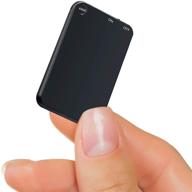
🎙️ High-Capacity 64GB Mini Voice Recorder - Telele Audio Recorder with 750 Hours Recording Capacity and 50 Hours Battery Life - Small MP3 Digital Recorder for Lectures, Interviews, Meetings, and Classes

9 Review
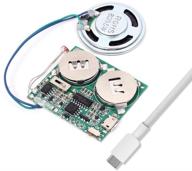
🎵 Icstation DIY Light Sensor Sound Module Micro USB Music Player for Talking Greeting Card: A Creative Gift with 8M Memory and Speaker

9 Review
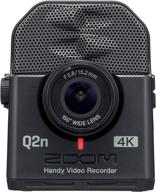
Zoom Q2n-4K Handy Video Recorder: Ultra High Definition 4K/30P Video, Compact Size, Stereo Microphones, Wide Angle Lens - Perfect for Music Recording, Video Production, YouTube Videos, and Live Streaming

13 Review
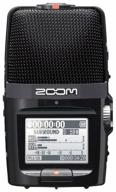
🎙️ Black ZOOM H2n Portable Recorder

15 Review
Another interesting products
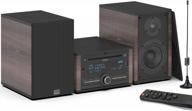
KEiiD Bluetooth Stereo Shelf System With Retro CD Player, Speakers, FM Radio Receiver, USB, AUX, Bass/Treble EQ, Wooden CD Music Bookshelf System For Home Audio

28 Review

SINGING WOOD Boombox Portable Bluetooth

9 Review
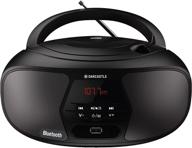
🎵 Oakcastle BX200 Boombox, Portable CD Player and FM Radio with Bluetooth Stereo Speakers and Multi-Connection Capability

9 Review
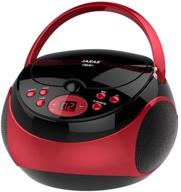
🎧 Jaras JJ-Box89: Red/Black Sport Portable Stereo CD Player with AM/FM Radio & Headphone Jack Plug - Ultimate Music Companion on the Go!

10 Review

